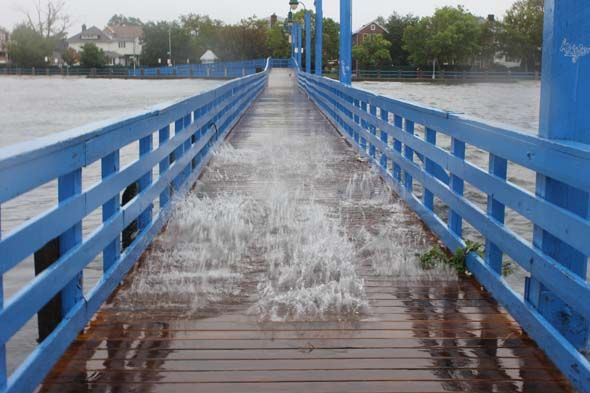New Climate Change Report Predicts More Severe Weather, Floods For New York

New York State’s future will hold hotter summers, snowier winters, severe floods and a range of other symptoms of an environment in flux, according to the latest climate change predictions. That could mean disaster for waterfront communities like Sheepshead Bay.
“The past year was a good teachable moment in terms of the types of impacts we anticipate with climate change,” said Art DeGaetano, a climate expert from Cornell University and one of the authors of the report, in an AP article.
ClimAID, the 600-page report, was written by scientists from Cornell University, Columbia University and CUNY, and was funded by the New York State Energy Research and Development Authority. It was written with the intention of warning residents of weather changes so they can start preparing for it.
Waterfront communities like Sheepshead Bay are in jeopardy because of increasing sea levels. It was reported that the sea levels along the New York State coastline have increased at least a foot since 1990. It also mentioned in the report that minority- and low-income residents will be affected the most by these changes because they live in areas that are vulnerable to flooding.
The AP article goes into some details explained in the report:
The study predicts average annual temperatures in New York state will rise by 4 to 9 degrees by 2080 and precipitation will rise by 5 to 15 percent, with most of it in the winter. It predicts that along the seacoast and tidal portion of the Hudson River, the sea level will rise by 1 to 5 inches by the 2020s and 8 to 23 inches by the 2080s. If melting of polar ice caps is factored in, sea level is projected to rise 37 to 55 inches by the 2080s, the report says.
“Climate change is already beginning to affect the people and resources of New York State, and these impacts are projected to grow,” said DeGaetano. “At the same time, the state has the potential capacity to address many climate-related risks, thereby reducing negative impacts and taking advantage of possible opportunities.”




